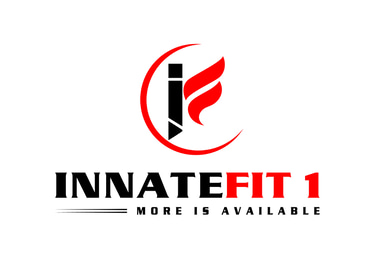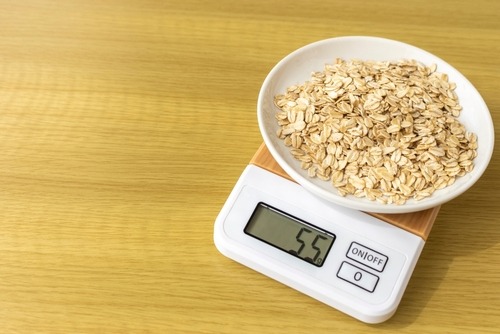Visit Innatefit1.com for exercise wear and equipment!!!
How a Macro Tracking Scale Can Help with Nutrition Tracking
A macro tracking scale helps improve nutrition tracking by precisely measuring food portions and macronutrients, making it easier to manage your diet effectively.
SELF-HELPWORKOUTSPERSONAL DEVELOPMENTFITNESS TIPSWEIGHT LOSS HEALTH
Joseph Battle
11/14/20258 min read
Introduction
In an era where health and wellness have become paramount, individuals are increasingly seeking innovative solutions to optimize their dietary habits and achieve specific fitness goals. A macro tracking scale emerges as a pivotal tool in this quest for nutritional precision, offering a modern, technologically advanced approach to understanding and managing one’s diet.
This device goes beyond traditional kitchen scales by enabling users to meticulously monitor their intake of macronutrients—proteins, carbohydrates, and fats—facilitating more informed dietary decisions.
By integrating digital technology with nutritional science, a macro tracking scale provides a comprehensive analysis of food consumption, which is essential for tailoring diet plans to meet various lifestyle and health objectives. This article explores how a macro-tracking scale can serve as an indispensable tool for individuals seeking to refine their nutrition tracking. It delves into the functionalities and benefits of these scales, illustrating their role in enhancing dietary awareness, promoting balance, and supporting specific nutritional goals.
As more people recognize the importance of dietary diligence for overall health, the macro-tracking scale stands out as a valuable ally in achieving a balanced, nutritious lifestyle. This exploration will guide readers through the nuances of utilizing this innovative tool, highlighting its impact on effective nutrition management.
Disclaimer: This article contains affiliate links that not only enable you to make an informed decision, but I may receive a commission at no extra cost to you.
Understanding Macro Tracking for Nutrition
Macro tracking, an approach that simplifies nutrition by focusing on macronutrients—protein, carbohydrates, and fats—helps individuals align their dietary intake with specific health and fitness goals. This method involves calculating the required amounts of each macronutrient based on personalized parameters such as age, weight, activity level, and overall objectives, whether they be weight loss, muscle gain, or maintenance. Macro-Scale.
By prioritizing the macro composition of foods rather than just calorie counting, individuals can ensure they are fueling their bodies with the right balance of nutrients. This approach not only helps achieve physical goals more efficiently but also enhances one's understanding of how different foods affect energy levels, performance, and overall well-being.
An essential aspect of macro tracking is accurately measuring food portions, which can be challenging without the right tools. This is where technology, especially macro tracking scales, becomes indispensable. These scales are designed to provide precise measurements, enabling users to portion out their food with accuracy that a simple estimate cannot achieve.
When using these scales, individuals can consistently maintain their targeted macro ratios, minimizing guesswork and reducing the likelihood of over- or under-consumption. Additionally, this consistency can lead to more predictable, sustainable progress toward nutritional and fitness objectives, making macro tracking an effective strategy for anyone looking to optimize their diet and health outcomes.
Benefits of a Macro Tracking Scale
A macro-tracking scale plays a pivotal role in improving the accuracy of nutrition tracking by precisely measuring the macronutrient content of foods. Unlike traditional kitchen scales that merely provide weight, a macro-tracking scale offers detailed insights into the specific amounts of protein, carbohydrates, and fat in each serving. Fitness Goals.
This level of detail is crucial for individuals striving to meet their dietary goals with precision, as it minimizes the risk of underestimating or overestimating portion sizes. By providing real-time data, a macro-tracking scale enables users to adjust their intake dynamically, helping them adhere to their daily nutritional targets more effectively.
Moreover, the use of a macro tracking scale can significantly improve dietary awareness and decision-making. As users become more attuned to the macronutrient breakdown of various foods, they are better equipped to make informed choices that align with their health objectives.
This heightened awareness can lead to a more balanced, mindful approach to eating, enabling individuals to seamlessly incorporate a variety of foods into their diet without compromising nutritional quality. In turn, this can foster a sustainable relationship with food, reducing the risk of nutrient deficiencies or imbalances while supporting long-term health and fitness.
How to Use the Scale Effectively
To maximize the benefits of a macro tracking scale, users should start by familiarizing themselves with the device’s features and settings. It's important to calibrate the scale before each use to ensure accuracy. Understanding how to enter food items correctly, whether manually or via a connected app, is essential for obtaining precise macronutrient information.
Users should consistently use the tare function to account for container weight, which helps get an accurate reading of the food itself. Regular practice with the scale will enhance proficiency, enabling seamless integration into daily routines.
In addition to its technical use, incorporating a macro-tracking scale into meal planning and preparation can substantially enhance dietary management. Planning meals and measuring ingredients with a scale can help you meet specific nutritional goals, such as maintaining a balanced intake of protein, carbohydrates, and fats. Data Tracker.
Users should also consistently track and record their data, enabling them to identify patterns and make necessary adjustments to their diet. By leveraging the detailed insights provided by the scale, individuals can make more informed nutritional choices, leading to improved health outcomes and goal attainment.
Integrating Scale Data with Meal Planning
It can leverage detailed data from a macro-tracking scale to refine its meal-planning strategies. By analyzing the macronutrient composition of various ingredients, individuals can tailor their recipes to align with desired nutritional outcomes. This precise approach allows adjustments to portion sizes or ingredient choices, ensuring that meals are not only balanced but also cater to specific dietary needs, such as those for weight management or muscle gain.
Additionally, cumulative data collected over time can help identify consumption patterns, enabling more informed decisions about dietary adjustments and long-term nutritional planning. As a result, integrating scale data into meal planning not only promotes accountability but also empowers individuals to make educated choices towards achieving their health objectives.
Monitoring Progress for Long-Term Success
To ensure long-term success in nutrition and health goals, monitoring progress is essential. A macro-tracking scale can be a valuable tool in this ongoing assessment process, providing consistent, objective data on macronutrient intake.
By regularly reviewing this data, individuals can identify trends, recognize potential areas for improvement, and celebrate achievements over time. This ongoing evaluation not only highlights immediate impacts on health and fitness but also fosters a deeper understanding of how dietary habits influence broader outcomes.
Furthermore, consistent monitoring provides timely, data-driven adjustments to dietary plans, which can be crucial for maintaining motivation and preventing plateaus. Thus, continuous progress tracking with a macro-tracking scale allows individuals to maintain momentum toward their long-term health goals, ensuring they remain on a path to sustained success.
In conclusion, a macro tracking scale can be an invaluable tool for individuals seeking to improve their nutritional habits and overall health. By providing precise measurements of macronutrients such as proteins, fats, and carbohydrates, it allows users to make more informed dietary choices and tailor their intake to meet specific health goals.
This technology not only helps achieve a balanced diet but also enhances awareness of portion sizes and nutrient density, crucial aspects of maintaining a healthy lifestyle. Whether one is aiming for weight management, muscle gain, or simply striving to eat more mindfully, incorporating a macro tracking scale into the daily routine can significantly streamline the process and contribute to long-term success.
FAQ
Encourages mindful eating and awareness
Mindful eating encourages individuals to pay full attention to their eating experience, promoting awareness of their food choices and the sensations of eating. It involves noticing colors, smells, textures, flavors, and even the sounds of food, as well as the body's hunger and fullness cues.
By fostering a non-judgmental awareness, mindful eating helps people develop a healthier relationship with food, reduce overeating, and enhance overall meal satisfaction. This practice also emphasizes the importance of understanding the emotional triggers for eating, thus supporting a more balanced and conscious approach to nourishment and well-being.
What features should I look for in a macro tracking scale to ensure accurate measurement of macronutrients?
When choosing a macro-tracking scale, look for features such as high-precision sensors for accurate weight measurements and a user-friendly interface for easy navigation. The scale should include a comprehensive food database to provide detailed nutritional information, including macronutrients such as proteins, fats, and carbohydrates.
Connectivity options, such as Bluetooth or Wi-Fi, enable seamless data synchronization with apps or devices. A tare function is essential for subtracting container weight, ensuring accurate food measurement. Additionally, a wide weighing range and durable, easy-to-clean materials enhance the scale's functionality and longevity, making it a reliable tool for tracking dietary intake.
How can a macro tracking scale simplify the process of tracking daily caloric intake and macronutrient ratios?
A macro tracking scale simplifies tracking daily caloric intake and macronutrient ratios by automatically recording and analyzing food data. It allows users to weigh their food items and instantly receive calorie, protein, fat, and carbohydrate information via a digital interface or a connected app.
This automation reduces the need for manual calculations and food diary entries, ensuring more accurate and efficient monitoring of dietary intake. It helps individuals maintain their nutritional goals by providing real-time insights and adjustments, streamlining the process of managing a balanced diet.
In what ways can using a macro tracking scale enhance my understanding of portion sizes and their impact on my nutritional goals?
Using a macro tracking scale can enhance one's understanding of portion sizes by providing precise measurements of food intake. This accuracy helps individuals visualize what appropriate serving sizes look like, which helps avoid underestimating or overestimating food portions.
By consistently tracking macros, a person gains insight into how different foods contribute to their daily nutritional goals, such as calorie, protein, fat, and carbohydrate intake. This heightened awareness can lead to more informed dietary choices, ultimately supporting better adherence to nutritional goals and promoting healthier eating habits over time.
How does a macro tracking scale integrate with mobile apps or software to provide a comprehensive view of my dietary habits?
A macro-tracking scale connects to mobile apps or software via Bluetooth or Wi-Fi, syncing data seamlessly. Users input their dietary information into the app, which the scale can enhance by providing precise measurements of weight and body composition. The app then processes this data to offer insights into macro intake, calorie consumption, and nutritional balance.
By integrating these metrics, the app creates a comprehensive overview of dietary habits, helping users make informed nutritional choices. This synergy allows for real-time tracking, personalized recommendations, and progress monitoring, fostering a more holistic understanding of one's dietary patterns.
What are some common challenges people face when using a macro tracking scale for nutrition tracking, and how can they be overcome?
People often struggle with the accuracy of portion sizes and the effort required to log every meal when using a macro tracking scale for nutrition. Data inconsistencies can also lead to frustration. To overcome these challenges, individuals can educate themselves on portion sizes and use the scale consistently for better accuracy.
Setting specific goals and gradually building the habit can make the process less overwhelming. Utilizing apps that sync with the scale for automatic logging can reduce the time and effort involved. Seeking support from nutrition communities can provide motivation and tips for effective tracking.








